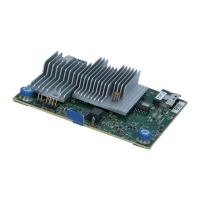Read cache policy
Write cache policy —
I/O policy
Drive caching
Strip size selection
FeatureFeature 200 series200 series 400 series400 series
RAID technologiesRAID technologies
SubtopicsSubtopics
Selecting the right RAID type for your IT infrastructureSelecting the right RAID type for your IT infrastructure
Mixed mode (RAID and JBOD)Mixed mode (RAID and JBOD)
StripingStriping
MirroringMirroring
ParityParity
Spare drivesSpare drives
Drive rebuildDrive rebuild
Foreign configuration importForeign configuration import
Selecting the right RAID type for your IT infrastructureSelecting the right RAID type for your IT infrastructure
The RAID setting that you select is based upon the following:
The fault tolerance required
The write performance required
The amount of usable capacity that you need
SubtopicsSubtopics
Selecting RAID for fault toleranceSelecting RAID for fault tolerance
Selecting RAID for write performanceSelecting RAID for write performance
Selecting RAID for usable capacitySelecting RAID for usable capacity
Selecting RAID for the storage solutionSelecting RAID for the storage solution
Selecting RAID for fault toleranceSelecting RAID for fault tolerance
If your IT environment requires a high level of fault tolerance, select a RAID level that is optimized for fault tolerance.
This chart shows the relationship between the RAID level fault tolerance and the size of the storage array. The chart includes RAID 0, 5, 50, 10, 6, and 60. It also
shows the percent reliability in increments between 1 and one billion and the storage array drive increments between 0 and 96.
This chart assumes that two parity groups are used for RAID 50 and RAID 60.
This chart shows that:
RAID 10 is 30,000 times more reliable than RAID 0.
The fault tolerance of RAID 5, 50, 6, and 60 decreases as the array size increases.

